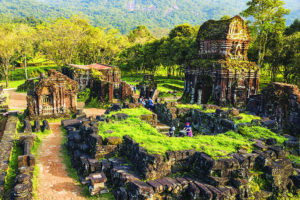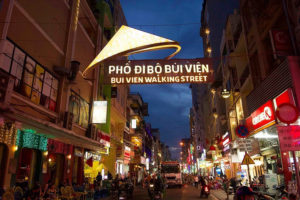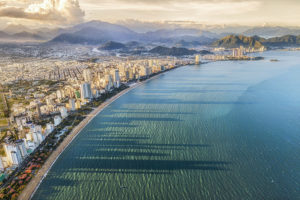24/7 Support: +84 903445750
Tonle Sap – The Largest Freshwater Lake in Southeast Asia
Tonle Sap Lake, located about 25 km from the center of Siem Reap city, is a major source of fish for over 3 million people living in the surrounding area and accounts for 75% of Cambodia’s freshwater fish production. The significance of Tonle Sap extends beyond Cambodia; it is also crucial for the downstream Mekong River. Beyond its geographical importance, Tonle Sap Lake is a popular tourist destination in Cambodia, attracting millions of visitors each year. In addition to the Cambodian residents, the Vietnamese community also lives on Tonle Sap Lake.
To learn more about Siem Reap, see: Things To Do In Siem Reap, Cambodia
Overview of Tonle Sap Lake, Cambodia
As the largest lake in Southeast Asia, UNESCO recognized the Tonle Sap Lake area as a World Biosphere Reserve in 1997, helping to establish stricter laws and regulations for its conservation.
Although it is unclear exactly how many people live on and around the lake, it is estimated that about 40% of the population lives below the poverty line. Most communities are very poor, with limited access to education and healthcare. Families living on the lake are not fixed in one location; they move their homes to different areas as water levels rise and fall with the seasons. Many villages use a combination of sturdy structures, stilt houses, and mobile homes that can be moved with the tidal flow. These communities are often referred to as “floating villages.”
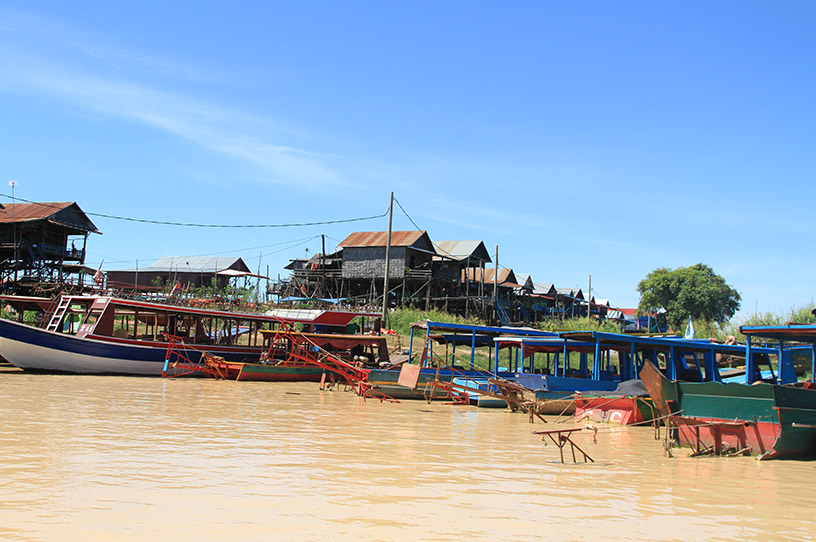
Fishing is the occupation of most families living on Tonle Sap Lake, and the grasslands are used for grazing livestock and agriculture. The tides and flow of the lake are crucial for the harvest season to maintain a food supply for the people. Moreover, most of the fish caught in the lake are transported to sustain the people of Cambodia nationwide and are a vital part of the economy, accounting for 16% of the GDP.
The Khmer New Year takes place in April each year, signaling the end of the harvest season. It is a time for Cambodian families to harvest before the rainy season begins, around June. When the rain starts, the water level of the Mekong River rises, and the flow from Tonle Sap Lake reverses.
Normally, water from Tonle Sap Lake flows along the Tonle Sap River, eventually merging with the Mekong and Tonle Bassac Rivers. During the rainy season, as water levels rise, the flow reverses back into the lake, a remarkable natural phenomenon. At this point, the lake becomes a massive reservoir, expanding in size up to five times and spreading over the surrounding lands, becoming the largest freshwater lake in Southeast Asia.
To learn more about tourist destinations in Vietnam and Cambodia, see: Best Places To Visit In Vietnam And Cambodia
When the dry season arrives around November, the lake is full, and life thrives. The water level in the Mekong River decreases, and the river flow reverses again. The Bom Om Touk Festival (also known as the “Water Festival”) symbolizes the end of the rainy season.
What makes Tonle Sap Lake Cambodia special to attract tourists?
Tonle Sap Lake plays a very important role in the lives of the people of Cambodia. It is especially a tourism product that creates many jobs for the local people. At Tonle Sap, you will have the opportunity to explore the largest freshwater lake in Southeast Asia by boat, visit floating fishing villages, explore a forest where thousands of Melaleuca trees live underwater, and visit the Prek Toal bird sanctuary.
Exploring Tonle Sap Lake by boat
Sitting on a motorboat and admiring the scenery of Tonle Sap Lake is an activity you cannot miss when here. This is also the type of service that most tourists choose.
Especially, there will be moments when you are startled to see a giant python wrapped around some of the locals on other boats. This is a not uncommon and extremely impressive and interesting sight during your trip. As you cruise around the lake, you can enjoy cold coconuts on the boat and take in the views, taking photos.
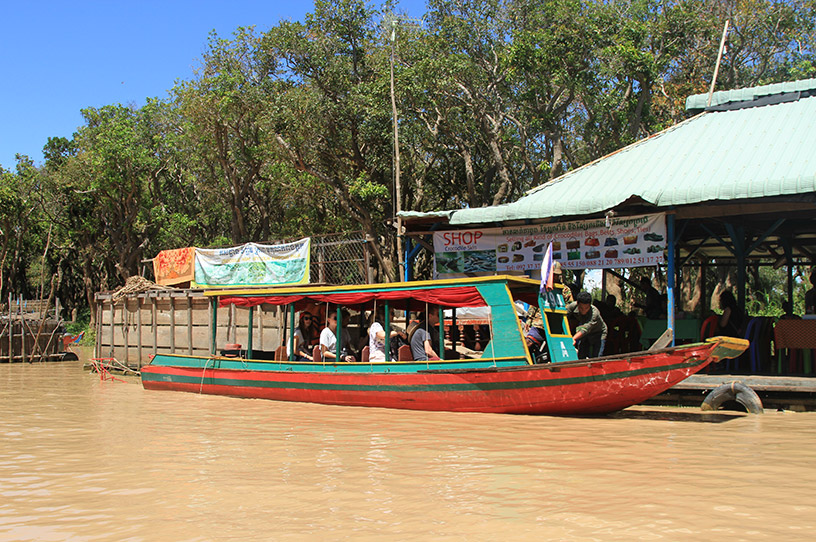
Visiting floating fishing villages
You can spend time visiting some of the floating fishing villages on Tonle Sap Lake, such as Kompong Khleang or Kampong Phluk… What’s more, there are even schools and hospitals here. Compared to the houses on the lake, these buildings are more beautiful and sturdy.
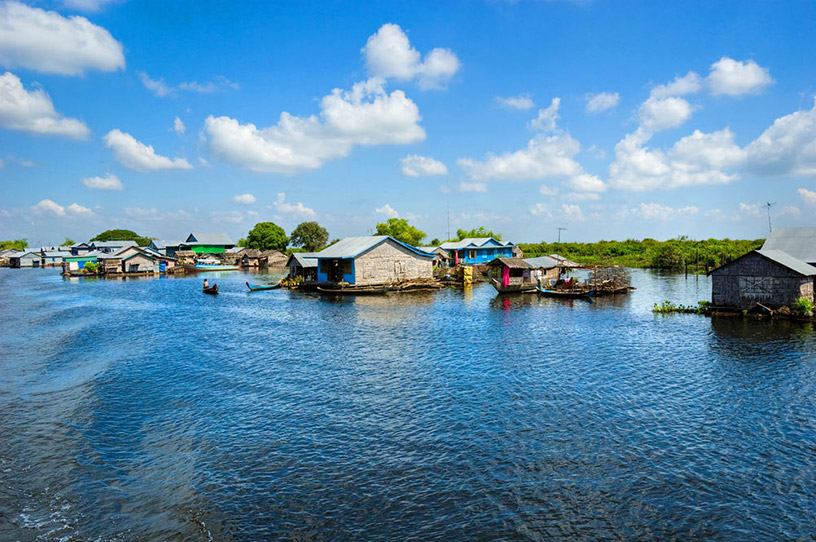
Exploring the Melaleuca forest
Exploring the Melaleuca forest is also often part of the tour of Tonle Sap Lake, this lush green forest surrounding the floating fishing villages is a very distinctive sightseeing spot. The Melaleuca tree plays a very important role in the protective forest of this area to prevent erosion and flooding.
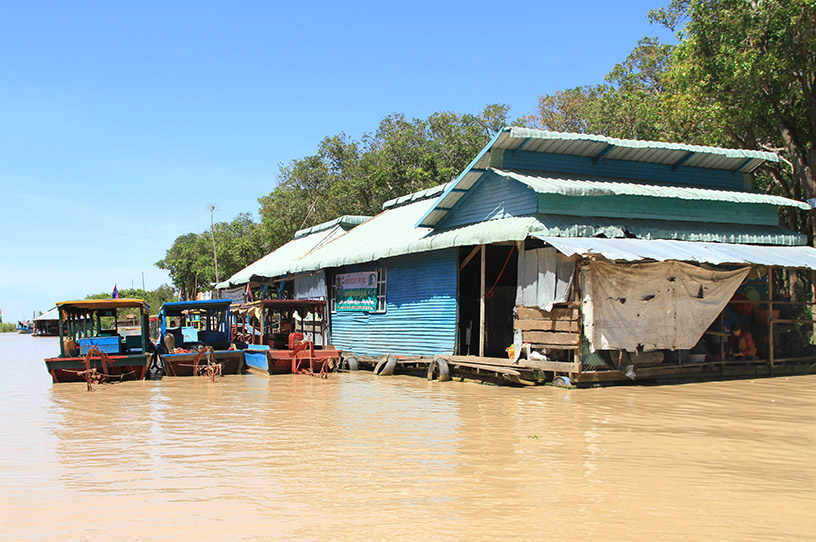
Prek Toal bird sanctuary
The Prek Toal area, covering 21,342 hectares, is located in the northwest of Tonle Sap Lake. It hosts the largest bird sanctuary in Southeast Asia. Currently, Prek Toal is home to approximately 50,000 birds, including at least 10 endangered species such as the spot-billed pelican, the milky stork, and the grey-headed fish eagle.
The Prek Toal Bird Sanctuary has become one of the most important protected areas for threatened waterfowl in Southeast Asia. Taking a boat tour through the sanctuary provides the opportunity to see many rare bird species.
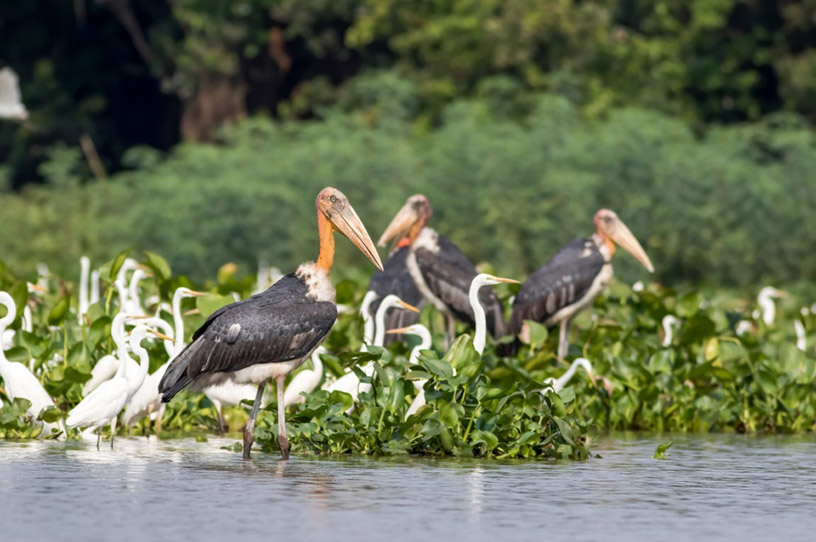
What to eat at Tonle Sap?
After visiting the sites at Tonle Sap, don’t forget to enjoy other unique cultural aspects of the cuisine at the Lake. The enticing, distinctive dishes made from fish caught directly from Tonle Sap Lake in Cambodia are fresh and delicious, offering you a memorable and exciting meal. Among these, the dried snakehead fish from Tonle Sap Lake is a famous delicacy, captivating many with its unique and flavorful taste. The fish meat, once cleaned, is marinated with various spices to create a delicious and aromatic flavor.
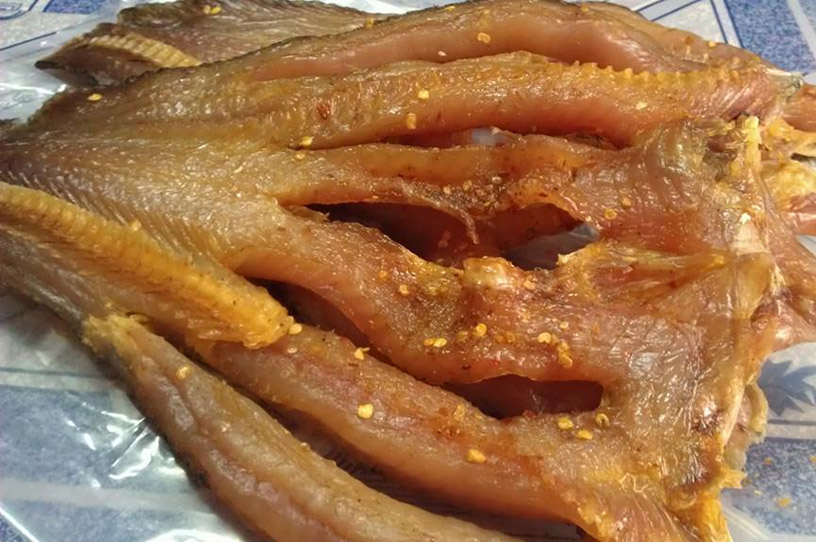
Read more: How To Prepare For A Trip To Vietnam And Cambodia
Conclusion
Tonle Sap Lake in Cambodia offers a picturesque landscape as vivid as a painting of life here. Exploring Tonle Sap on boats, learning about the local people’s lives, and enjoying fish dishes caught from the lake will be enjoyable activities during your entire trip to this largest freshwater lake in Southeast Asia.

